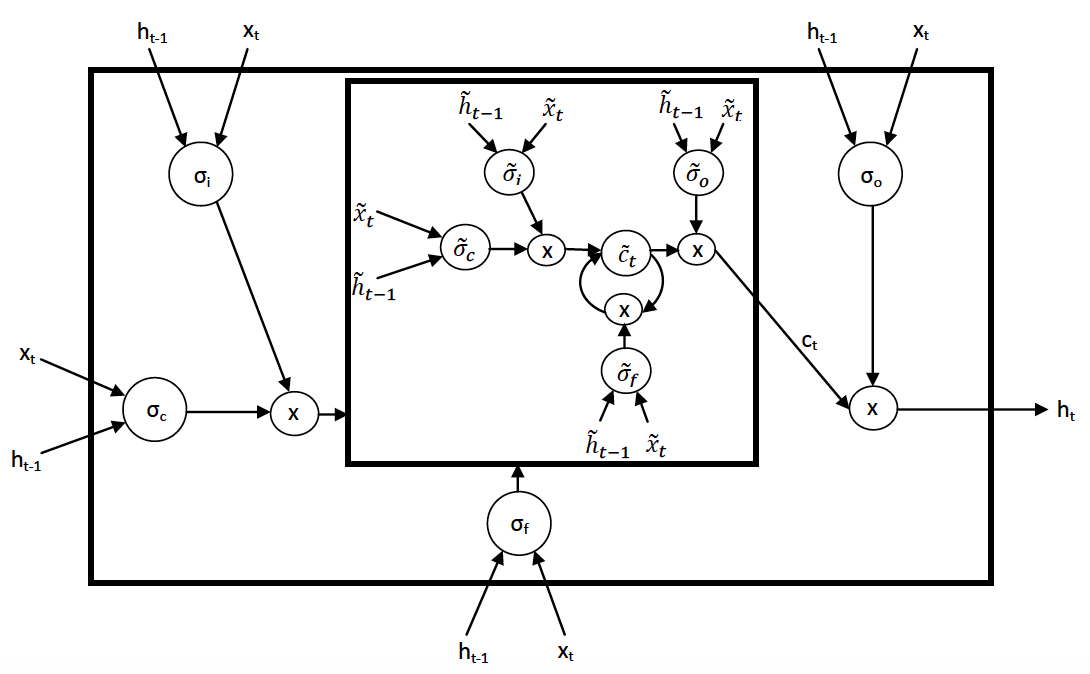Nested LSTMs
We propose Nested LSTMs (NLSTM), a novel RNN architecture with multiple levels of memory. Nested LSTMs add depth to LSTMs via nesting as opposed to stacking. The value of a memory cell in an NLSTM is computed by an LSTM cell, which has its own inner memory cell. Specifically, instead of computing the value of the (outer) memory cell as $c^{outer}_t = f_t \odot c_{t-1} + i_t \odot g_t$, NLSTM memory cells use the concatenation $(f_t \odot c_{t-1}, i_t \odot g_t)$ as input to an inner LSTM (or NLSTM) memory cell, and set $c^{outer}_t$ = $h^{inner}_t$. Nested LSTMs outperform both stacked and single-layer LSTMs with similar numbers of parameters in our experiments on various character-level language modeling tasks, and the inner memories of an LSTM learn longer term dependencies compared with the higher-level units of a stacked LSTM.
PDF Abstract

 Penn Treebank
Penn Treebank